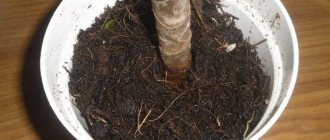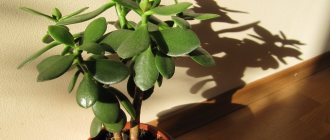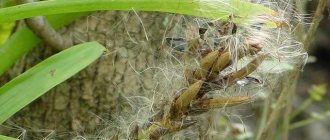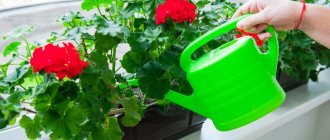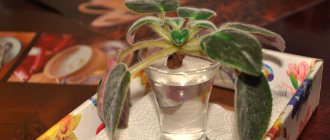Indoor hibiscus should be replanted annually in its first three years of life, and in some cases once every 6-7 months. This is the period of the most active growth of the plant. When grown properly, hibiscus can grow to quite a decent size even when grown indoors. The height of the plant reaches 1.5 and sometimes up to 3.0 m. Adult plants require less frequent replanting. Unnecessarily, they should not be replanted more than once every two to three years.
Why do you need to replant an indoor flower?
Indoor hibiscus is well known to lovers of home flowers. It is also called Chinese rose. It is difficult to say why the plant is associated with the Celestial Empire, despite its large growing area, hibiscus in China is still a rarity. For home cultivation, many varieties bred by breeders are used. The external difference between the subspecies is the different shade of flowers. There is also a variety of Chinese rose with pockmarked, white-green leaves. Whatever flower you choose, it will be useful to know how to create optimal living conditions for it. The Chinese rose is unpretentious and in order for it to grow and regularly delight you with flowers, you will not need much.
Young specimens need replanting every year. As it grows, it will be enough to change the planting container and soil every 2-3 years.
Before you run to the store for a new pot or soil, make sure that the replanting procedure is necessary for your hibiscus.
Usually, the main sign that allows you to think about an urgent transplant is the root system of the plant that has become stronger and has grown throughout the earthen coma.
Replanting is also necessary for those plants that you recently purchased at a flower shop. In these cases, most often poor-quality or poor soil mixture is used to transport and maintain flowers. So experienced gardeners advise replacing the soil with a better quality one and the pot with a more suitable one as soon as possible (but this should be done only after the hibiscus has recovered a little from the stressful move).
An equally significant reason for replanting a flower may be the presence of stimulants in the soil. Manufacturers often add substances to the soil mixture that promote active flowering of the plant. Because of this, its growth slows down sharply and the risk of spider mite infection increases significantly.
The value of hibiscus in the home
There is an opinion that hibiscus is considered the flower of death. Some superstitions say that growing Chinese roses at home brings bad luck, illness and death to the occupants. There are such signs:
- The plant suddenly blossomed - the death of someone in the family is approaching.
- Hibiscus has dropped its leaves - expect a terrible illness or misfortune.
Despite all the prejudices, the Chinese rose is a very popular plant and is grown in many homes. The plant itself does not have toxic or poisonous elements in its composition, so it cannot in any way affect the health of household members.
Join our Facebook group
How often should indoor hibiscus be replanted?
The Chinese rose is replanted every spring in the first three years of the growing season. During this time, the plant manages to grow to the size of a small bush or tree. The shape of the crown depends on the specifics of pruning.
Next, the hibiscus is replanted at intervals of two to three years. Transplanting an adult plant presents some difficulties, since it is a long-lived, tall species.
Typically, five to six year old hibiscus is grown as a tub crop.
Indoor hibiscus grown in a tub is not replanted, but the top layer of soil is replaced.
They do this as follows:
- The substrate is watered abundantly one or two days before the planned event.
- The top layer is carefully loosened with a wooden stick and removed with a spatula.
- They try to carefully remove the maximum amount of undeveloped substrate.
- In its place, fresh soil is poured, which is compacted manually.
The optimal distance from the ground to the top level of the tub or pot is one to two centimeters. In this case, the plant will receive a sufficient amount of moisture in one watering. The water will not flow over the edge of the pot, but will be absorbed by the substrate.
How to carry out the procedure correctly?
To ensure a successful hibiscus transplant, follow the instructions below:
- First you need to carefully remove the plant from the old flowerpot. Be extremely careful not to damage the roots. Clean out the clod of old drainage.
- Carefully inspect the soil ball. If the soil does not show signs of souring and there are no pests in it, then you can simply replant the plant using the transshipment method (that is, replant it into a larger pot without removing the old earthen lump). The roots of the flower should have a light shade, they should be elastic. If you notice brown, black spots or other defects on them, this indicates rotting.
- If you see that the roots of the plant are damaged or are suffering from pest attack, then you need to clean the roots from the old soil and trim the darkened areas. The remaining roots in the system need to be washed in a solution of some fungicide or insecticide. Only after this can the hibiscus be transplanted into new soil.
- Carefully remove the top layer of soil from the soil ball, do not inadvertently damage the roots!
- Place a layer of drainage on the bottom of the planting container.
- Start pouring the soil mixture on top. Try the earthen ball with the plant on the new container. The restored layer of soil that you removed from the old soil ball should be 3-4 cm below the top border of the pot. If the lump with the root system drops too low, then you can add a little more soil, and if it turns out to be too high, then remove some of the soil with a spatula or scoop so as not to disturb the drainage layer.
- Fill the voids between the root ball and the walls of the planting container with fresh soil.
- Gradually compact the soil and add fresh mixture as needed. The compacted soil should be at the level of the earth ball.
- Usually hibiscus are planted without deepening. The root neck of the flower should remain at ground level after planting. Instead of the layer of soil that you previously removed from above, you need to add fresh soil mixture. The root collar should remain at the same level after this.
- Water the planted plant thoroughly so that water appears in the pan. As soon as the water has completely drained, pour it out of the pan. If the soil has settled too much around the edge of the planting container, add fresh soil.
- After transplantation, spray the hibiscus with a stimulant solution (for example, Zircon or HB 101). This will help speed up the rooting of a plant that has experienced stress.
Features of transplanting indoor hibiscus
Transplanting a Chinese rose is not much different from traditional methods, although it has a number of features characteristic only of this species.
The method and technique of transplantation depends on factors such as:
- age of the specimen;
- state of the root system.
There is also a division into:
- emergency transplant, which can be performed at any time of the year;
- regular transshipment carried out in early March, before the start of the active growth phase.
An emergency transplant is performed:
- after purchasing a new plant;
- The hibiscus got sick and stopped growing.
Purchasing a new plant involves hassle with proper transportation (in winter), adaptation at home, and replanting.
Transplantation of acquired hibiscus is carried out no earlier than ten days later, so that the plant has time to adapt to the new microclimate of the apartment or house.
The transport substrate is not only useless, but also dangerous, since it contains a huge amount of undigested chemical compounds.
Subsequent care of the transplanted plant
The transplant can be considered successful when the first new leaves appear on the hibiscus. Much, of course, will also depend on the subsequent care of the plant. The transplanted flower should be put back in its original place if:
- the transplantation was planned and carried out using the transshipment method;
- the plant has a strong and developed root system;
- the flower was prepared for transplantation according to all the rules.
In this case, the Chinese rose will experience a minimum of stress. A flowerpot with such a specimen can be safely placed on a windowsill, having first protected its crown from direct sun.
Watering
It is best to water hibiscus in the early morning or late evening, when the sun is already setting on the horizon. At first, it is best to water through a tray so that the roots of the plant quickly master the new substrate. The first month, watering should be moderate, the main thing is that the soil does not dry out.
You cannot overwater the plant, this can lead to its death!
In addition to standard watering, you also need to use spraying. And sometimes you can give the hibiscus a “bath”: place the pot with the flower in the bathtub or take it out into the yard, then water the plant from the shower or any other sprayer.
In summer, hibiscus needs to be sprayed once every 7 days, but in winter, only once every 21 days is enough. During the active heating season, you need to monitor the condition of the earthen clod with special care. It should not be allowed to dry out.
Fertilizer
Like all varieties of plants with long and abundant flowering, hibiscus needs regular feeding . You can use universal mixtures for flowers. Fertilizers for flowering plants are not suitable for Chinese roses because they contain too much phosphorus. Apply fertilizer once a week, choose a warm, but not hot, cloudy day for this procedure.
Trimming
During the period of active growth and formation, hibiscus may grow untidy.
To make its crown beautiful and lush, you need to give it the correct shape by trimming. Pruning can only be done in the autumn , when the flowering of the plant has already ended. This limitation is due to the fact that buds can form on shoots at the age of 2-3 months. So if you prune the bush, for example, in May, the shoots will be too young and the hibiscus will refuse to bloom.
During formative pruning, it is also necessary to remove damaged and infected stems, which are located almost parallel to the main trunk.
If you want the Chinese rose to be more attractive, form its bush in the form of a standard tree.
Indoor hibiscus does not require any special care. At the same time, it will delight even a novice gardener with abundant flowering in exchange for attention and care. However, the main problem for many is replanting the Chinese rose, on which its further development and flowering depends. It must be carried out according to all the rules and instructions in order to keep the plant healthy.
Time of year to transplant
Almost all indoor hibiscus have a fairly long flowering period, which is followed by a dormant period. Most often, the plant begins to actively grow and gain color with the onset of March. The active growing season ends in October.
During this period, the plant can acquire buds several times. Based on the life cycle, the best time for replanting is March.
The awakening processes that have begun will accelerate rooting and reduce adaptation time. You can also replant in the summer. Transplantation in autumn is undesirable. The plant enters a dormant state, its life processes slow down. Important! Hibiscus should not be replanted during flowering.
Features of outdoor care for garden hibiscus
The nuances of caring for garden hibiscus include the need to constantly loosen the soil and remove weeds around it.
The plant needs abundant watering, especially on hot days.
You need to feed the bush once every two weeks with phosphorus-containing fertilizers. Pruning is carried out in spring or early summer. It is important to properly prepare young trees for the dormant period: before frost sets in, water them abundantly, mulch the soil around with dry leaves and sawdust, and bend the plant to the ground. For shelter, build a frame and tighten it with special material.
Is it possible to replant hibiscus in the fall?
The natural flowering period is winter and summer. Autumn is a dormant period, so replanting at this time of year is undesirable. However, the flowering time of the tea rose can be shifted. In order for the plant to form buds in the fall, pruning and replanting are done in May.
Hibiscus is transplanted only when it becomes really cramped in the pot. Young plants require this procedure once a year, adults (over five years old) once every 3-4 years.
What is needed for the procedure at home?
Since young hibiscus are replanted every year (and sometimes even twice a year), the size of the planting container must be increased by 40-50 mm in diameter each time.
Specimens older than 5 years can be replanted every 3-4 years, but the top layer of soil must be replaced annually. For transplant you will need:
- suitable soil mixture;
- landing container of the required size;
- drainage.
The new container for planting should not be too large. It is enough to choose a flowerpot that will be approximately 4-5 cm larger in diameter than the dimensions of the previous container.
The soil should be loose, nutritious, and neutral.
- You can prepare it yourself: take leaf soil, turf soil, humus and sand in a ratio of 2:2:2:1. It is also worth adding charcoal and ash to the mixture.
- The following substrate option is also suitable: peat, humus, garden soil and washed cuttings in proportions 2: 1: 1: 0.5. Since hibiscus prefers neutral soils, and peat has high acidity, add ½ cup of wood ash and 1 tbsp for every 2 liters of soil. a spoonful of mineral fertilizer.
- You can also use ready-made purchased mixtures from a flower shop. Of these, also choose those that have a neutral reaction.
Before pouring soil into the planting container, be sure to lay a 30-40 mm layer of drainage on the bottom. This will help protect the soil from acidification.
Transplantation during flowering
Almost all indoor varieties of hibiscus have a long flowering period, which is followed by a period of sleep (rest). Typically, the plant begins to sharply grow and form inflorescences in March. The active growing season for hibiscus ends around October.
During the entire growing season, hibiscus can acquire buds more than once. So it’s best to replant it in March. In this case, the awakening processes that have begun will help to somewhat speed up adaptation and rooting in the new soil.
Hibiscus cannot be replanted during flowering!
You can, of course, replant hibiscus in the summer, if you have the opportunity. But this should not be done in the fall, since the flower goes into a dormant state, and life processes begin to slow down.
There are times when a plant needs an emergency transplant. For example, when the soil is contaminated or pests attack. There is no need to hesitate here, since a prolonged course of the disease or active activity of parasites can destroy the plant.
Reproduction
Let's learn how to propagate hibiscus at home. The most effective method of propagating hibiscus at home is cuttings. The cuttings are rooted in nutritious soil under polyethylene at a temperature of 20-25 degrees. Sometimes propagation by seeds is used.
You can read more about all the methods of plant propagation here.
Hibiscus reproduces indoors by seed and cuttings.
The disadvantage of propagating indoor hibiscus by seeds is that young specimens may not retain the varietal characteristics of the mother plant. However, in a sense, this is even interesting - it opens up a wide field for experimentation!
Let's take a closer look at growing hibiscus from seeds at home and how to care for the sprouts.
The most optimal time for sowing seeds is the end of winter - the beginning of spring (from mid-January to mid-March). Before sowing, the seed material should be soaked for 12 hours in a solution of a growth stimulator, for example, Epine or Zircon. Then the seeds are sown in boxes or bowls filled with a mixture of peat and sand in equal parts. Seeding depth – no more than 3-5 mm.
The container is covered with glass and polyethylene and placed in a warm (25-27 degrees) place. For better seed germination, it is recommended to use bottom heating. The “greenhouse” should be ventilated daily, and the soil should be moistened as necessary using a spray bottle.
When the seedlings have 2-3 leaves, the film or glass can be removed. A week after acclimatization, they can be planted in individual pots. To make the stem even, the pot should be rotated around its axis from time to time.
Hibiscus grown from seeds begin to bloom at 3-4 years of age.
Let's consider propagating hibiscus by cuttings at home.
The most suitable period for cutting hibiscus at home is the end of February - the beginning of March or the end of August. It is best to use semi-lignified cuttings. This is explained by the fact that soft green shoots are very likely to rot, and very woody shoots will take a long time to take root.
The cuttings for propagation should have 2-3 internodes; it is advisable to shorten large leaves by half. It is recommended to treat the sections with a root formation stimulator, for example, Kornevin. There are two ways to root cuttings: in water or in substrate.
In the second case, small greenhouses or individual pots are used, filled with sand or a mixture of peat and sand in equal parts. It is recommended to warm the soil to 22-25 degrees.
Both when rooting in water and in soil, it is recommended to cover the cuttings with polyethylene or a glass jar. Such a “greenhouse” will speed up the rooting process, which usually lasts from two weeks to a month.
When the cuttings take root (and this can be determined by the appearance of new leaves), they can be planted in pots with a diameter of 7-10 cm in a permanent place. The earth mixture consists of sand, leaf and turf soil (1 part each) and 2 parts humus. It's also good to add a little bone meal.
As a rule, hibiscus grown from cuttings bloom 3-6 months after rooting.
Replanting after purchase
Replanting purchased hibiscus is the key to successful cultivation. The specificity of industrial cultivation of flora is to increase the demonstration qualities of plants. The purpose of the industrial substrate is to ensure the transportation of the plant.
Transplanting a Chinese rose at home is a simple task, however, in order for the plant to quickly take root and begin to bloom, certain rules must be followed.
It is not advisable to replant a tea rose after purchase, especially if the plant is in flowering state. However, if the hibiscus is sitting in an unsuitable pot, then it is best to transfer it to another container.
Features of movement
After the purchase
It is not advisable to replant immediately upon arrival home. The hibiscus must get used to the new environment. The exception is an unsuitable pot. Before replanting, a store-bought plant must be treated with a disinfecting solution, since it is completely unclear in what conditions the plant was kept.
In open ground
The most important thing when replanting is choosing a place for the Chinese rose. It should be protected from drafts, warmed by sunlight and well lit.
Planting a young plant should occur after the onset of constant heat. It is necessary to dig a large hole, be sure to lay a layer of drainage (this can be drainage coal or expanded clay), then a layer of well-loosened soil (it is advisable to add a purchased special mixture) and let it warm up during the day.
Consequences of untimely transplantation
If the plant is not replanted after purchasing it in a store, this can lead to stunted growth, development of pests, and lack of flowers. Flower producers grow their products in soil enriched with growth stimulants. Such cultivation gives only a short-term effect of good growth.
If the roots of a plant are completely entwined with a clod of earth, then it will begin to suffer from a lack of nutrients, lag behind in growth, and lose its decorative appearance. Hibiscus not only stops blooming, but also loses its leaves. In order for the plant to tolerate the procedure more easily, several rules must be followed when carrying out the procedure.
Possible problems
The appearance of yellow spots on the leaves indicates a dry climate, insufficient watering or excess light.
A delicate tropical plant does not always do well at home. Typically, a stressful condition is associated with errors in care.
Let's look at what problems the Chinese rose has:
1
The plant dies and upon closer examination, drying of the roots is noticeable. This is evidence of cold soil or insufficient watering. You should move the hibiscus pot to a warmer place and increase the frequency of watering
2
Root rotting. Occurs when moisture stagnates. The plant will have to be replanted, rotten roots removed and good drainage created.
3
The appearance of dark pink or reddish spots on the foliage. The reason is excessive feeding combined with poor lighting. You need to stop feeding for a while and choose a lighter area to place the bush.
4
Falling off of buds and flowers. Associated with drafts, sudden temperature changes, and insufficient watering. Restoring the indoor microclimate and increasing the amount of moisture will help solve the problem
5
Yellowing and lightening of foliage. Caused by iron deficiency (chlorosis). Watering with well-settled water to which iron chelate is added will help, based on the instructions for the treatment of chlorosis
6
The foliage turns yellow and curls. The cause is too dry air. You should increase spraying and place a container of water or a humidifier next to the plant.
7
Growth of green mass in the absence of flowering. Possibly due to “overfeeding” with nitrogen fertilizers. It is necessary to adjust fertilizing, add potassium-phosphorus components for the formation of flower buds
8
Spread of aphids. Pests “live” on the underside of leaves, so they are noticeable only upon detailed inspection. In case of minor infection, the leaves are washed with a solution of soap or oil in water, garlic solution
9
The appearance of spider mites. Noticeable by light cobwebs between the foliage. It is easy to destroy it with a soap-oil solution and increasing the number of sprays (mites do not like moisture)
10
Infestation of scale insects. They are visible as dark spots located on the underside of the leaf along the leaf veins. Scale insects are not afraid of insecticides, so they are removed manually and then preventively treated with chemicals. The procedure is repeated until they are completely destroyed.
Whitefly
11
Whitefly detection. Greenish larvae settle on the underside of the leaf, sucking out the juice. Characteristic sugary secretions appear on the leaf blade. Consequences: leaves turn yellow and fall off. The harmful parasite multiplies quickly, so “chemistry” is necessary
12
Stretching of stems and turning of foliage. A sign of lack of light. The “place of residence” of the Chinese rose should be changed
13
A white, fluffy coating appeared on the leaves, which eventually turned brown. This is powdery mildew - a fungal disease that appears when there is dense foliage and high humidity in the room. Fungicides are used against it, after removing diseased leaves.
Most pests multiply exponentially. Traditional fighting using folk remedies is not always effective. Chemical plant protection products come to the rescue: Fundazol, Akktelik, Aktara, Iskra, Tanrek, Fufanon and others. During processing, household members must leave the apartment.
Most often, the owners of a “green pet” are concerned about the issue of flowering. If it flatly refuses to bloom, it means that the following points were not taken into account when caring for the hibiscus:
- too large a container was used for planting;
- the bush was placed in a shaded place;
- not enough daylight hours;
- abandoned fertilizing or reduced it to a minimum;
- did not carry out autumn pruning to form annual shoots.
If there is any problem, you should take a close look at the plant. Based on external signs and general condition, it is possible to determine the cause associated with lapses in care.
How to make hibiscus bloom is shown in the video:
HIBISCUS does not bloom | How to make a CHINESE ROSE bloom at home
Hibiscus (Chinese rose): description, cultivation, propagation and care, possible diseases of tropical mallow | (75+ Photos & Videos) + Reviews
Cyclamen - violet from a bulb: description, growing from seeds at home, plant care, propagation and replanting (75+ Photos & Videos) + Reviews
What to do if the Chinese rose withers after transplantation
Sometimes it happens that a tea rose withers and dries after transplantation. This is a normal reaction of a plant to a change of location and should not be ignored.
Causes
There are few reasons for hibiscus wilting, here are the most common ones:
- lack of light;
- change of place;
- excess or lack of moisture;
- damage to the rhizome during transplantation.
If the plant has not recovered within 7-10 days after transplantation, the plant’s habitat should be improved.
How to fight?
During the wilting period, the plant needs to be provided with access to light and moisture.
If the root system was damaged during transplantation, the Chinese rose will have to be re-transferred. To do this, the plant is carefully pulled out of the pot, the damaged roots are carefully cut off with a sterilized knife, and the sections are treated with potassium permanganate.
To speed up the healing process, vermiculite is added to the soil.
Following these simple recommendations will allow you to achieve abundant and regular flowering from your hibiscus.
Why do you need to move the plant to another pot?
There are two types of moving indoor plants from pot to pot - transplanting and transferring.
Transshipment is preferable for any flowers; with this method, the roots of the plant remain in the old soil, the plant reacts less to the new environment and takes root faster, and it also helps to keep the roots intact. And replanting means changing the soil mixture completely, exposing the roots, which can lead to their damage.
A transplant is required if:
- the plant is sick;
- pests appeared in the soil;
- the roots began to rot;
- replacement of incorrectly selected earthen mixture.
Transshipment is preferable when the hibiscus roots have nowhere to grow in the old pot.
